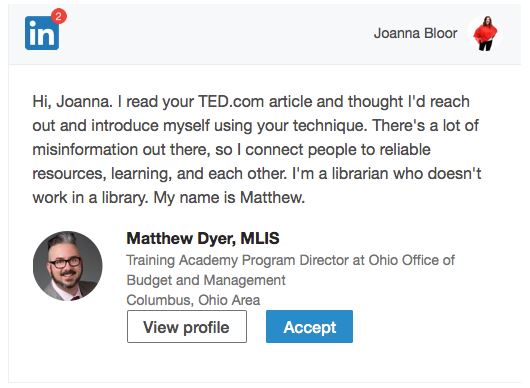My day begins, much like many of you, with checking my emails. Two similar yet markedly different emails popped into my inbox within about 20 seconds of each other this morning. These simple and quite common emails are excellent examples of how the smallest things can impact how others perceive you. This simple thing?
Requesting a connection on LinkedIn.
Here’s the first one:

You’ll notice we’ve blacked out the person. I have no doubt the requester is an awesome and lovely human. I’m not about embarrassing people.
I also do not doubt that you’re wondering what’s wrong with this invitation. Look at this second request for comparison.

I don’t personally know either of these people. And we have no shared connections or companies. These two people were, as of about an hour ago, total strangers to me.
Upon reading the two requests:
- Who would you connect with?
- If someone asked you what these two people did, who’s going to get a better introduction from you?
This is not my first time on this soapbox. I’ve written about how to send a better LinkedIn introduction before. Also if you’re reading this we’re already connected on LinkedIn, so you don’t need to worry about the message you’re sending to me.
What I want you to think about is the message you’re sending to someone else. Because that “someone” might be someone who could open a door for you, introduce you to someone you need to meet, the list goes on.
Every decision made about you and your opportunities is made in a room you’re not in. In short, people in that room are talking about you. Do you want them to say “Operations manager” or “Connects people to reliable resources and learning in the training academy”?
Matthew gave me the language to talk about him in an authentic, compelling, and unique way.
Simple right?
And yes, I did accept Matthew’s LinkedIn request to connect. Matthew, thank you for letting us use you as an example of how to be brave.



